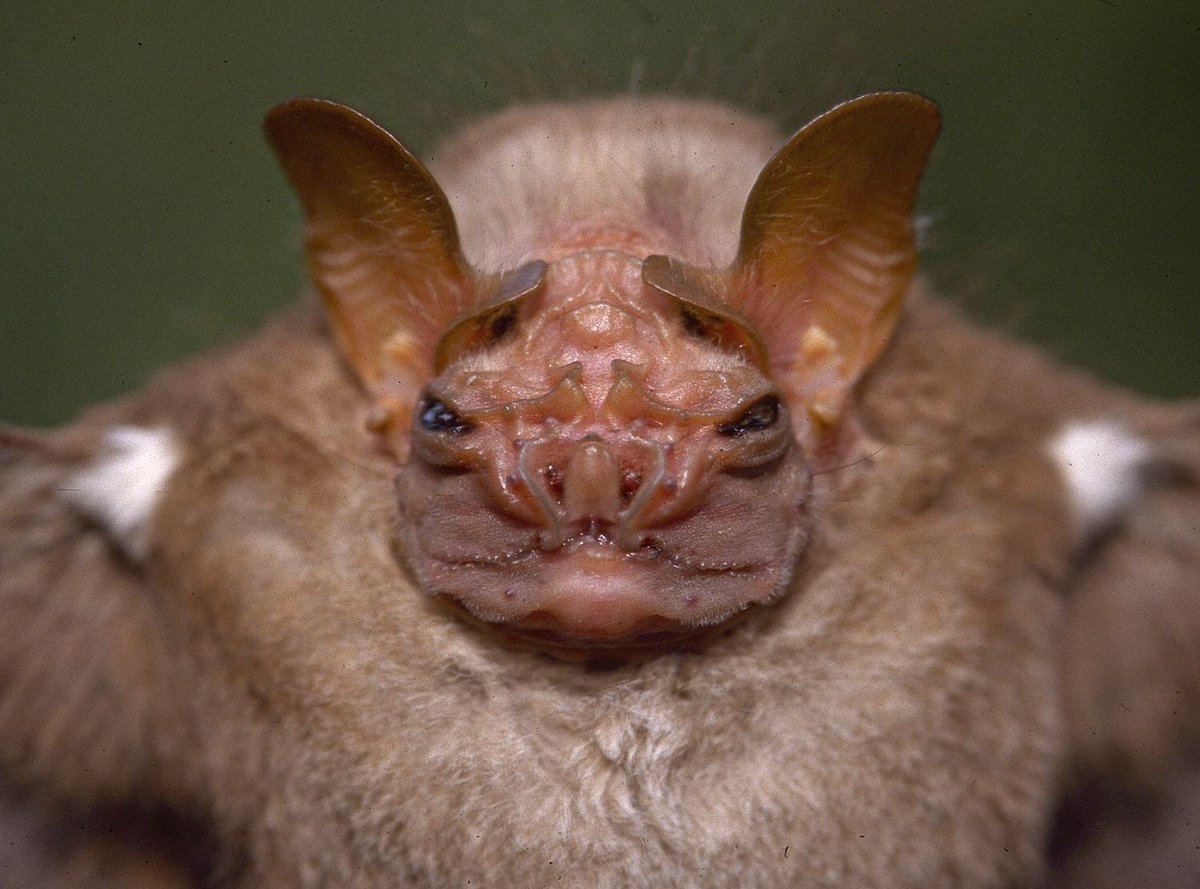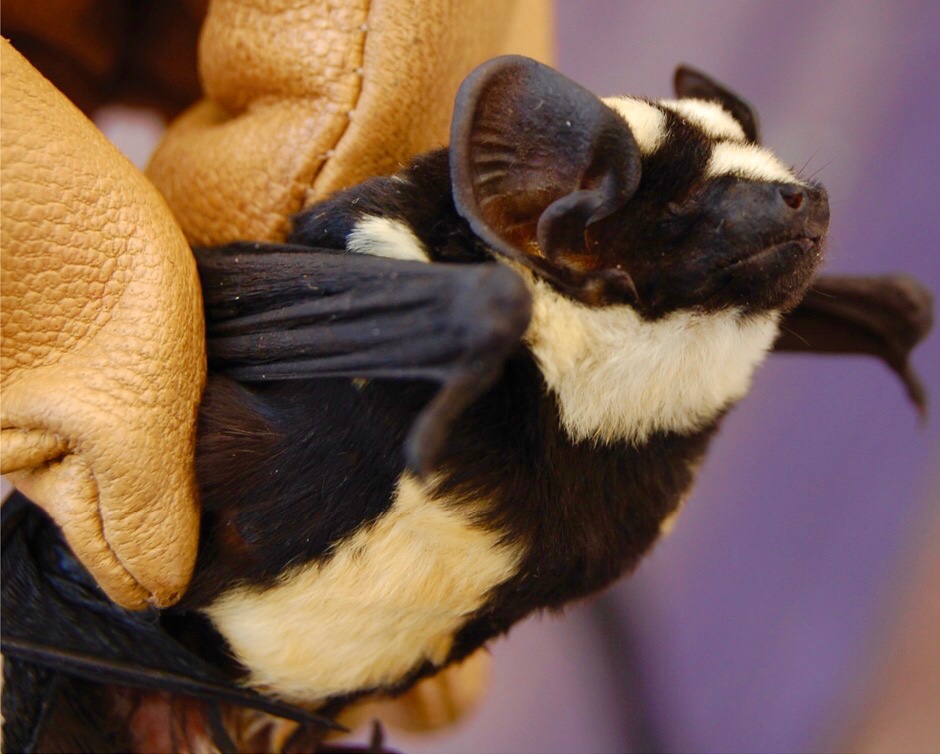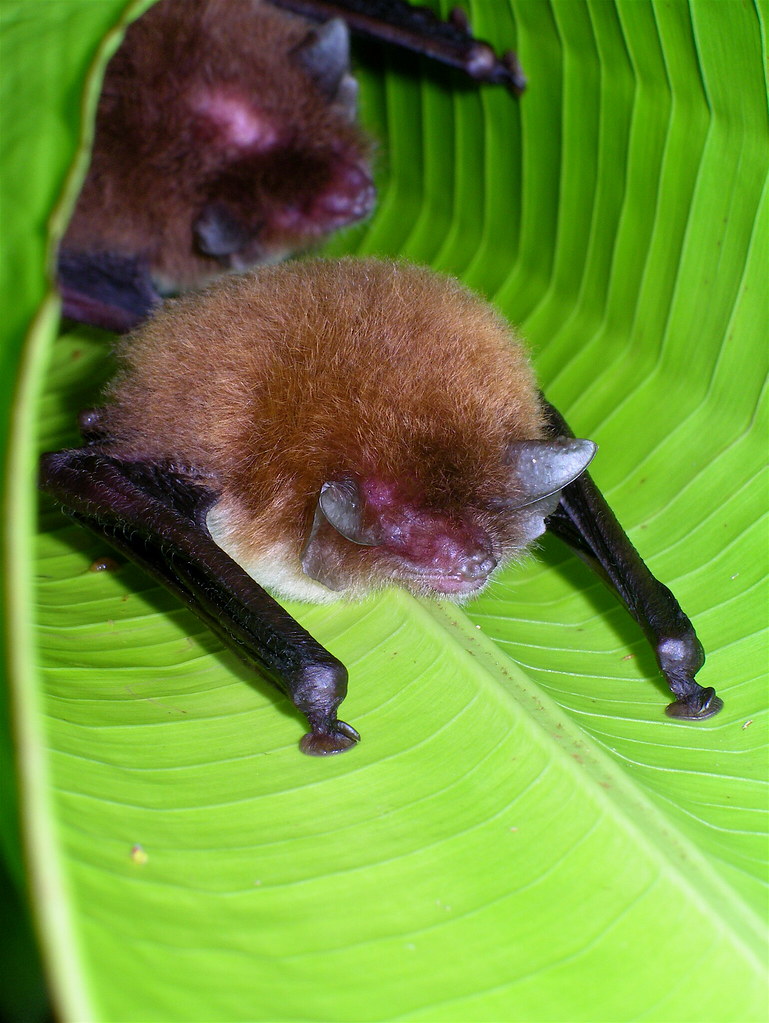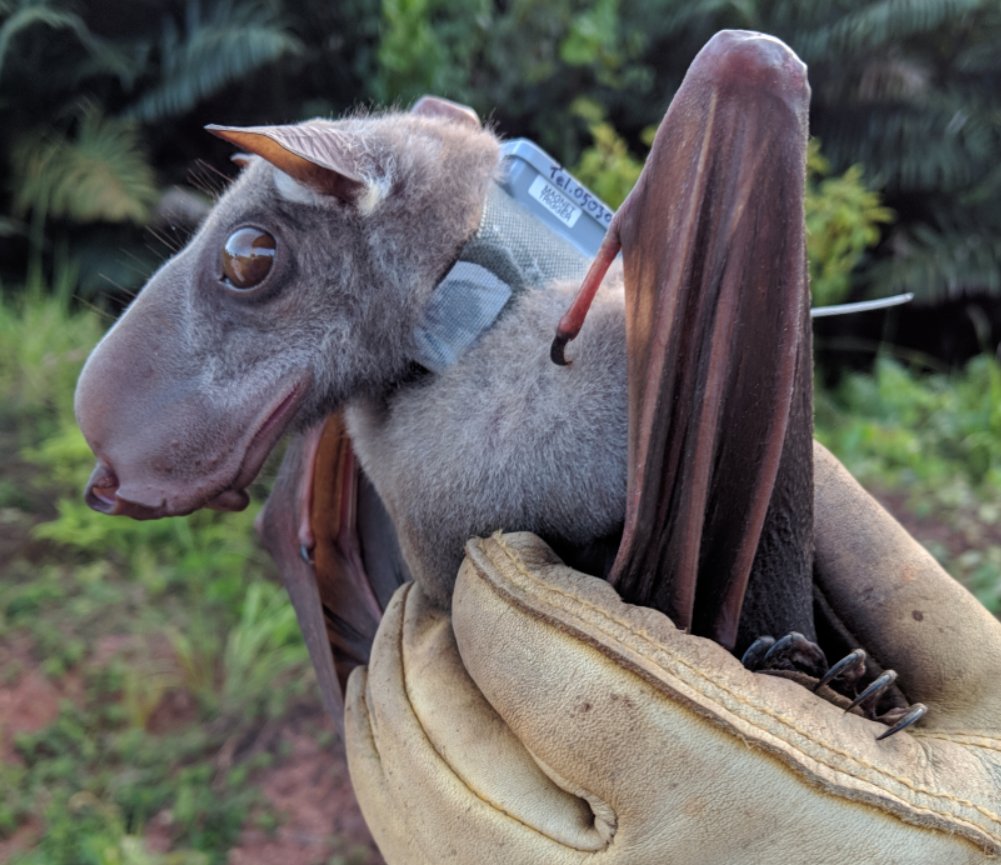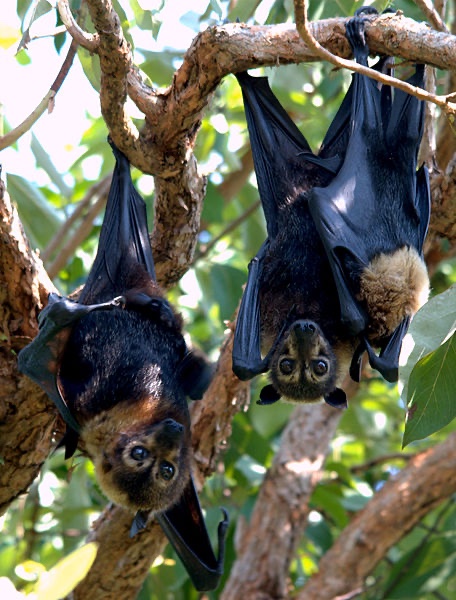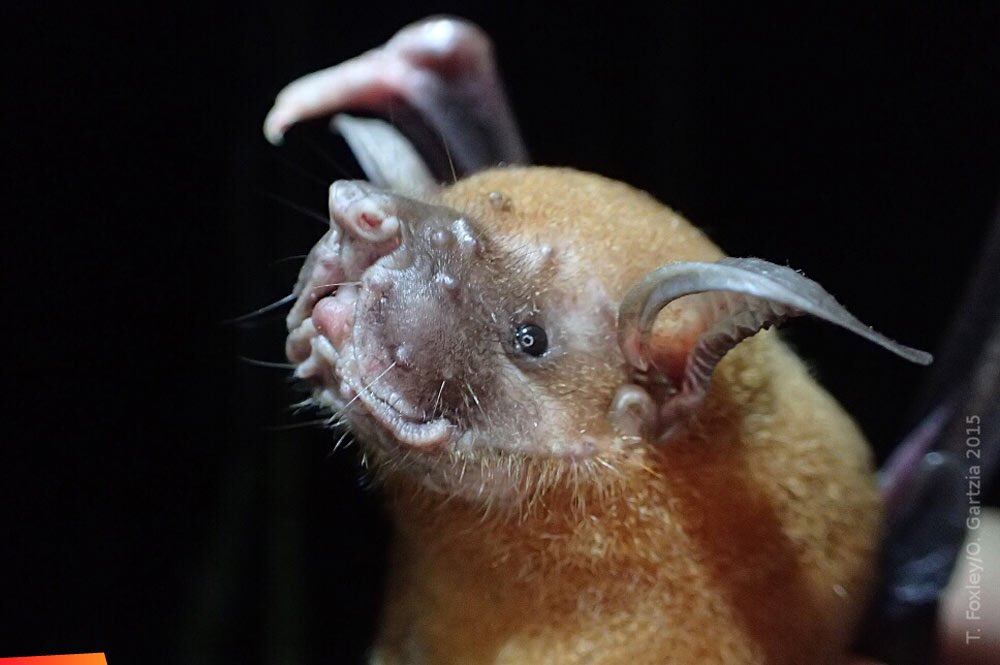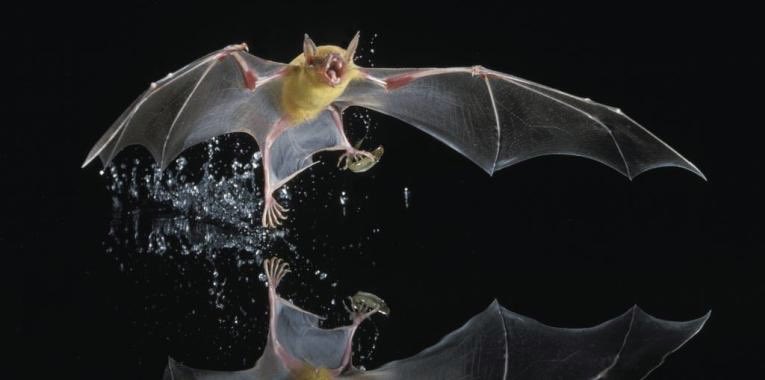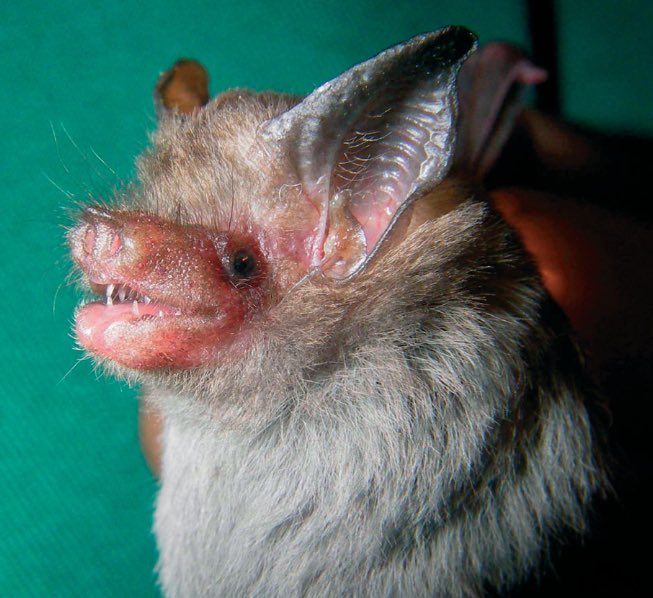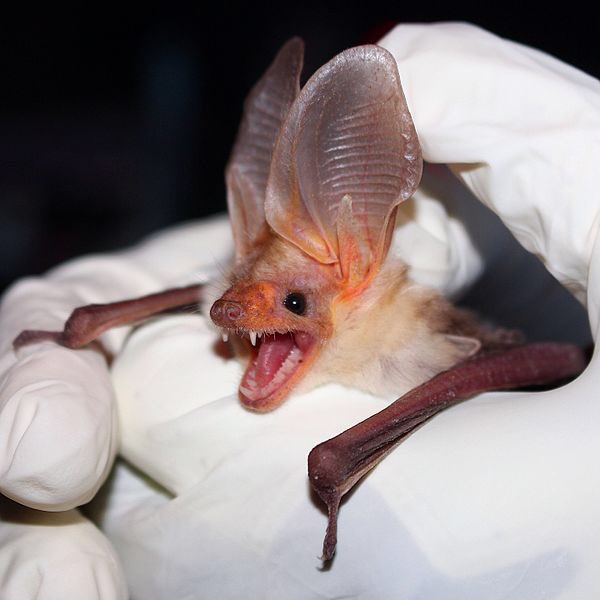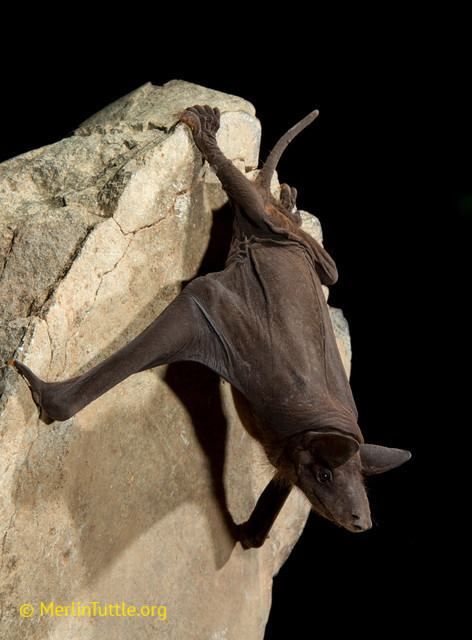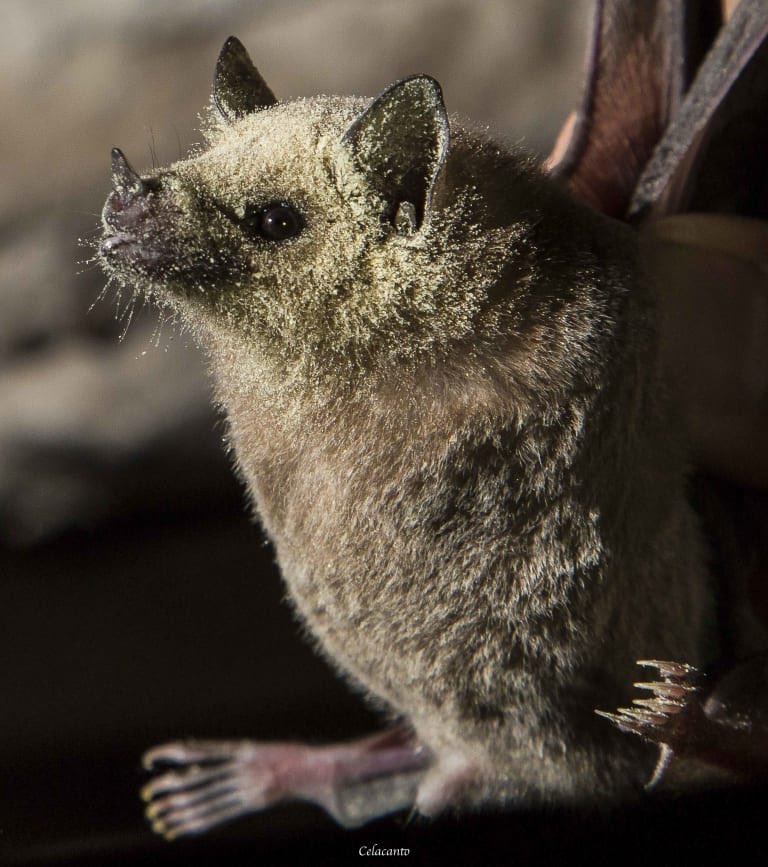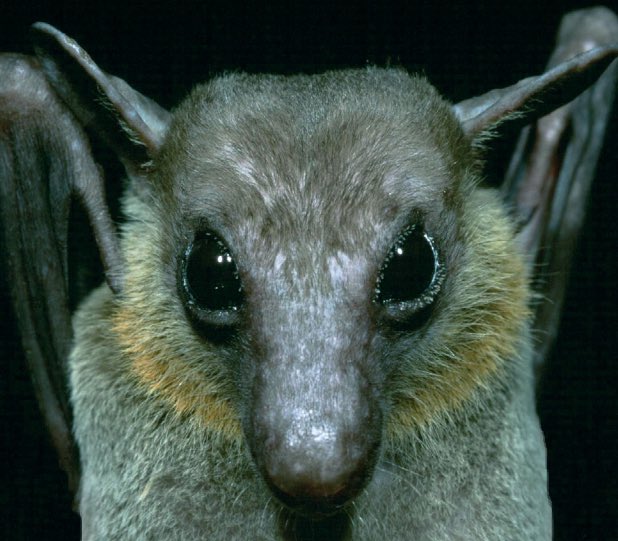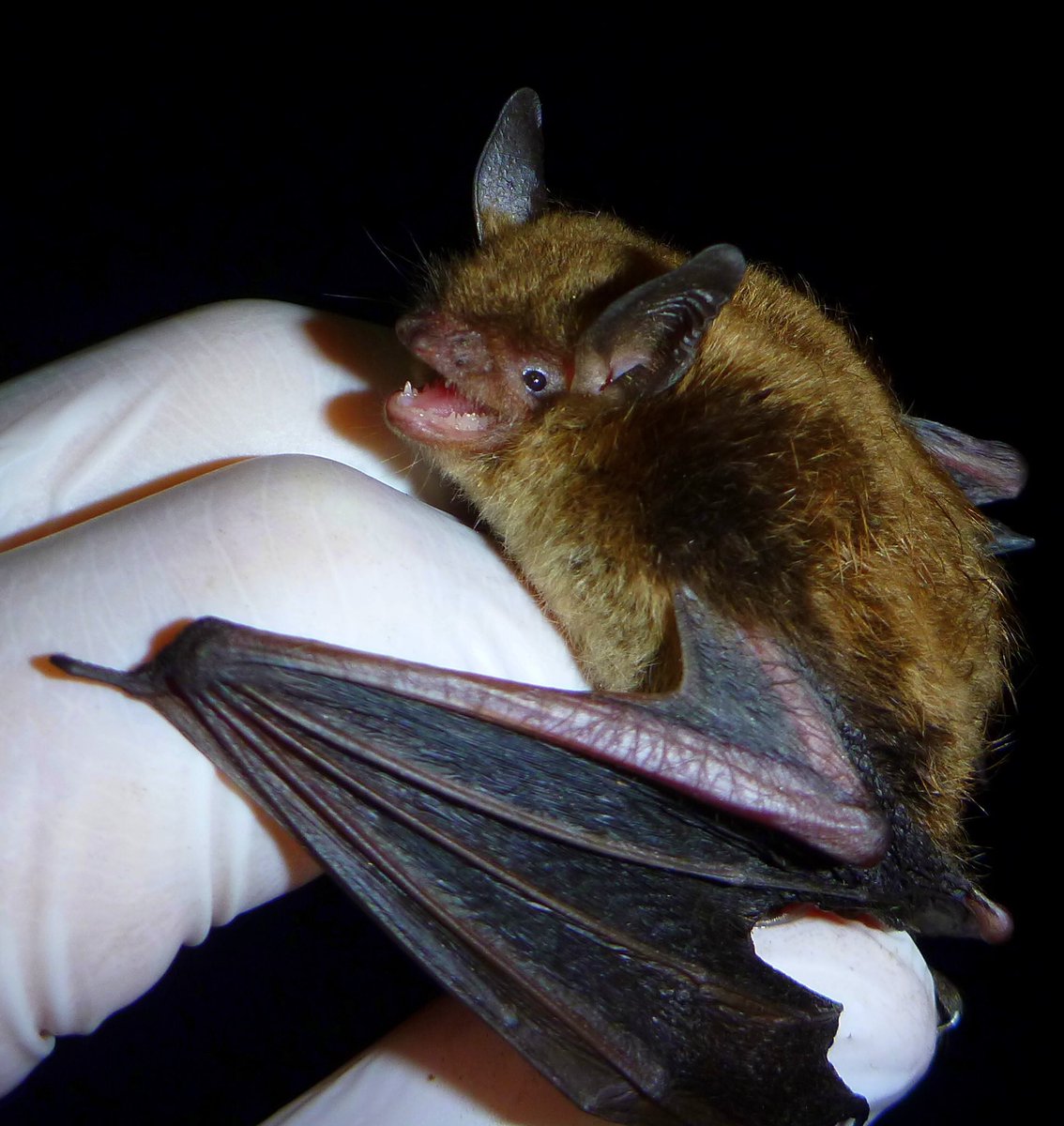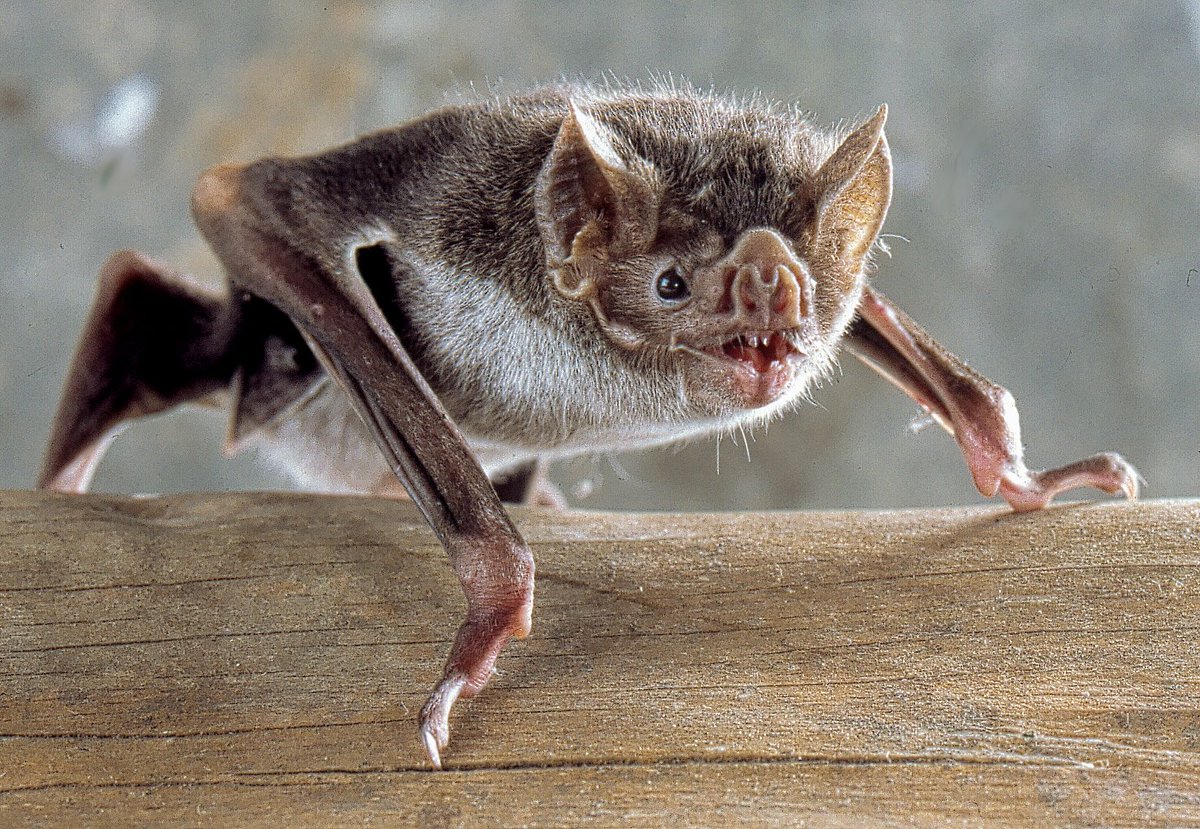IT
IS
BAT
APPRECIATION
MONTH
IS
BAT
APPRECIATION
MONTH
I& #39;m gonna do a Bat A Day for Bat Appreciation month.
First up is the wrinkled-faced bat, who are fruit eaters whose chonky face has an unusually strong bite force, that helps them eat seeds and other stuff that would otherwise be inedible.
They are beautiful.
First up is the wrinkled-faced bat, who are fruit eaters whose chonky face has an unusually strong bite force, that helps them eat seeds and other stuff that would otherwise be inedible.
They are beautiful.
Bat Number two is the pied bat (Niumbaha superba).
They are unique in that they are the only member of their genus, and also BECAUSE THEY ARE YELLOW AND BLACK LIKE A BIG FUZZY BUMBLEBEE, JUST LOOK AT THEM
They are unique in that they are the only member of their genus, and also BECAUSE THEY ARE YELLOW AND BLACK LIKE A BIG FUZZY BUMBLEBEE, JUST LOOK AT THEM
Bat Number Three is the Madagascar sucker-footed bat (Myzopoda aurita).
They are one of the few bat species that roost head-side up, instead of upside-down, because they sleep while USING TINY ADHESIVE CUPS ON THEIR HANDS TO STICK TO LEAVES
They are one of the few bat species that roost head-side up, instead of upside-down, because they sleep while USING TINY ADHESIVE CUPS ON THEIR HANDS TO STICK TO LEAVES
Bat Number Four is the hammer-headed bat (Hypsignathus monstrosus). This one is a male, which you can tell by his honking (literally) snout.
Having such a big head helps them honk louder when they line up w the other boys, in a giant-sing-off called a & #39;lek& #39;, to impress lady bats
Having such a big head helps them honk louder when they line up w the other boys, in a giant-sing-off called a & #39;lek& #39;, to impress lady bats
Bat Number Five is the spectacled flying fox (Pteropus conspicillatus), aka “my default answer for ‘What Animal Represents You As A Person?’”
They live in Australia so they’re technically right-side-up, here
They live in Australia so they’re technically right-side-up, here
Bat Number Six is the greater bulldog bat or fisherman bat (Noctilio leporinus) so named because they catch small fish and shrimp, with their hooked claws.
They use echolocation to detect fish jumping, or their fins poking as little as a millimetre above the water, then swoop in!
They use echolocation to detect fish jumping, or their fins poking as little as a millimetre above the water, then swoop in!
Bat Number Six is the Honduran White Bat (ectophylla alba), tiny floofs who chew on leaves to make tents to live under.
fun fact: their yellow skin is from how these bats process lutein! scientists are studying this, to try & find a treatment for macular degeneration in humans
fun fact: their yellow skin is from how these bats process lutein! scientists are studying this, to try & find a treatment for macular degeneration in humans
Bat Number Eight is the Egyptian fruit bat (Rousettus aegyptiacus).
Bats of the Rousettus genus are among the only megabats (flying foxes) to echolocate, & they also have a socially-complex vocalization system (bat language!!!) to talk amongst themselves
Bats of the Rousettus genus are among the only megabats (flying foxes) to echolocate, & they also have a socially-complex vocalization system (bat language!!!) to talk amongst themselves
Bat Number Nine is the Kitti& #39;s hog-nosed bat (Craseonycteris thonglongyai), also known as the bumblebee bat.
Arguably the smallest mammal in the world (fight me, Etruscan shrew) they weigh less than 2 grams. VERY SMOL
Arguably the smallest mammal in the world (fight me, Etruscan shrew) they weigh less than 2 grams. VERY SMOL
Bat Number 10 is the pallid bat
Not only do they have adorably friendly faces, these desert bats specialize in catching insects on the ground and therefore evolved an IMMUNITY TO SCORPION VENOM
Not only do they have adorably friendly faces, these desert bats specialize in catching insects on the ground and therefore evolved an IMMUNITY TO SCORPION VENOM
Bat Number Eleven is the hairless bat (Cheiromeles torquatus), aka & #39;the bat that looks most like those improbable reconstructions of extinct mammals by a paleontological artist, or possibly a rejected Muppet& #39;.
They also hide their wings in skin flap pouches while roosting!
They also hide their wings in skin flap pouches while roosting!
I FORGOT A BAT YESTERDAY
SO TODAY Y’ALL GET TWO BATS
SO TODAY Y’ALL GET TWO BATS
Bat Number 12 is the lesser long-nosed bat (Leptonycteris yerbabuenae), who was the 2020 poster child for National Pollinator Week!
These North American desert dwelling pollinators are a crucial species for night-blooming cacti like saguaros, organ pipe and agave (tequila!)
These North American desert dwelling pollinators are a crucial species for night-blooming cacti like saguaros, organ pipe and agave (tequila!)
Bat Number 13 is the lesser dawn bat (Eonycteris spelaea), aka ‘the bat that got me into the longest consistently running special interest of my life’, after visiting Pura Goah Lawah in Indonesia, age 10.
They are also an important pollinator species, esp. of crops like durian!
They are also an important pollinator species, esp. of crops like durian!
I’ve been very bad about this over the past few days because Brain Things, I will be back later today with TRIPLE THE BATS
Bat Number Fourteen is the little brown bat (myotis lucifugus)
They’re little!
They’re brown!
They’re a bat!
(They’re an important keystone species suffering from severe population decline, protect them)
They’re little!
They’re brown!
They’re a bat!
(They’re an important keystone species suffering from severe population decline, protect them)

 Read on Twitter
Read on Twitter